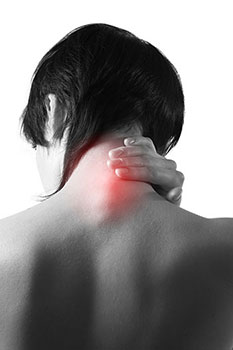
The spinal column consists of bones that form the cervical spine, thoracic spine and lumbosacral spine. Unfortunately, it is subject to a variety of different movements that can sometimes result in strains and sprains. In this article, we shall briefly review some of the common injuries that can affect the neck and spine and how one can adopt measures to treat them and prevent them.
Sprains and strains
The Neck
The cervical spine consists of bones that form the neck. It is subject to different twists and turns and positions during normal daily activities such as working in front of a desk or even sleeping. During these different movements, it can become prone to injury and thus can result in a degree of pain during movement. Patients typically complain of neck pain but can also sometimes experience tingling and discomfort in their arms, as the same nerves that are present in the neck extend down to the arms.
The primary treatment for neck pain is physical therapy. Physical therapy consists of a series of different exercises that are aimed at controlling pain, reducing inflammation, establishing a full range of movement and promoting healing. Treatments can involve stretching and strengthening exercises, in addition to ultrasound therapy and electrical stimulations therapy. In addition to these, patients will also be offered non-steroidal anti-inflammatory drugs along with symptomatic management such as heating pads and a cervical collar.
The Spine
The remainder of the spine includes the thoracic spine and the lumbo-sacral spine. Between the two, the lumbo-sacral spine is more prone to injury, as it bears a big part of the body weight when the body is upright. Twists and turns can cause sprains and strains that can produce a range of movement and affect quality of life.
As is the case with cervical sprains, sprains and strains that involve the spine also require physical therapy in addition to painkillers such as non-steroidal anti-inflammatory drugs. Physical therapy includes exercises such as core strengthening and back strengthening maneuvers along with stretching and electrical stimulations. The application of a TENS machine is also useful in some patients. However, not all patients who undergo physical therapy and who use painkillers obtain adequate relief from clinical symptoms. Many times, patients will also require some form of surgical therapy depending upon what the cause of the pain is. Sprains and strains can sometimes include disc prolapse and stress fractures of the spine, which will also need correction. It is not all about the healing ligaments but it is also about the healing muscles and bones.
Conclusion
Sprains and strains for neck and spine can be a rather debilitating condition that can significantly affect an individual’s quality of life. It is important for all patients who suffer from these injuries to seek medical attention in order to ascertain the degree of injury and to obtain the required treatment sooner rather than later. Delaying treatment can cause long-term disability, which can have a significant negative impact on the patient.
